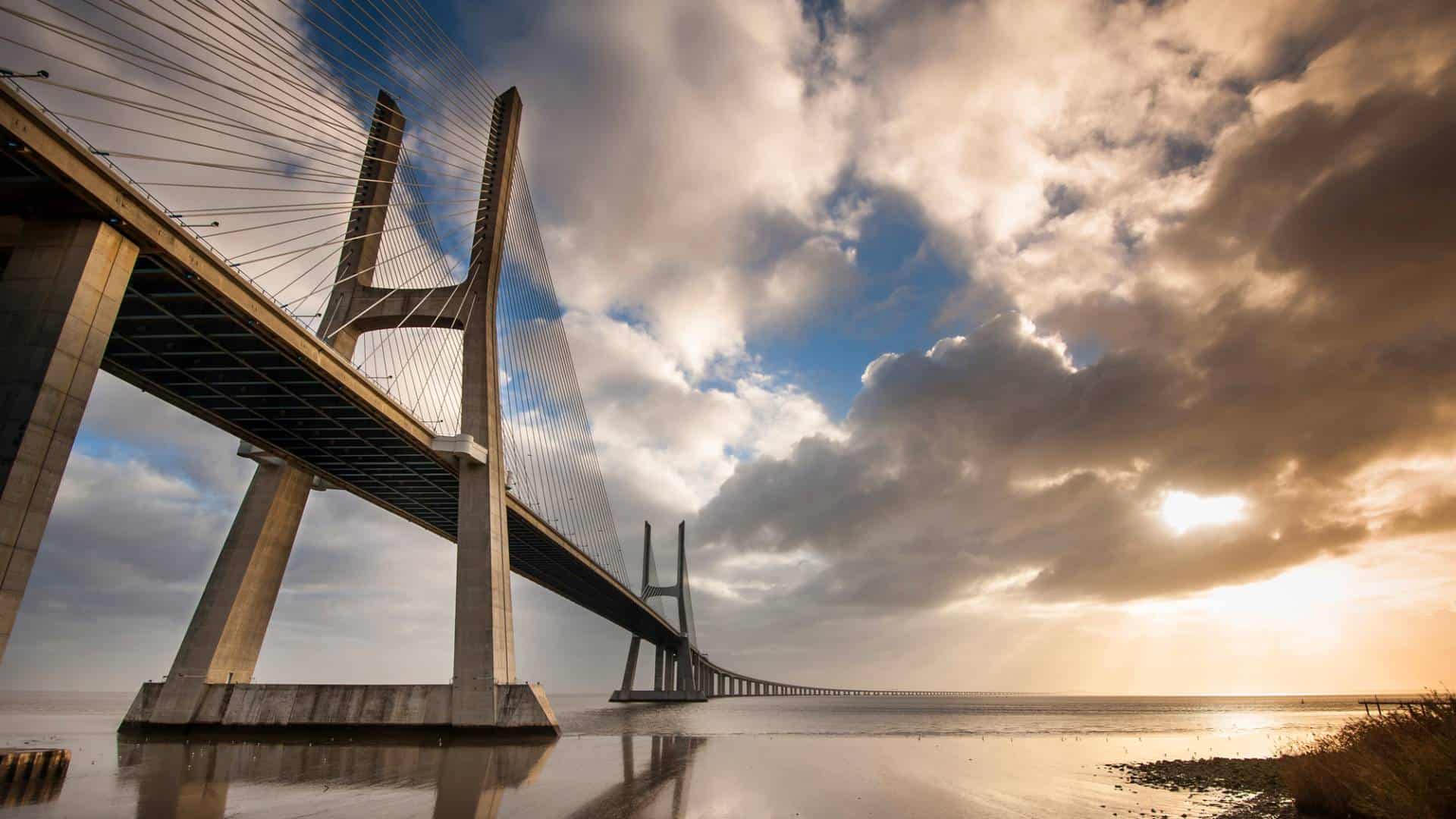
Longest Bridge in Europe
The longest bridge in Europe is the Crimean Bridge (also known as the Kerch Strait Bridge). This bridge connects the Taman Peninsula of Russia with the Crimean Peninsula, which was annexed by Russia in 2014.
The Crimean Bridge is approximately 19 km (11.8 miles) in length. It consists of both a road and rail bridge, making it a significant transportation link between the two peninsulas.
Please note that there might be new developments or construction projects after my last update, so it's a good idea to check more recent sources for the latest information on bridges in Europe.
Of the many different styles of bridges, generally suspension bridges are the longest, followed by cable-stayed, cantilever, and steel arch in that order.
Incidentally the highest bridge in Europe is the impressive Europabrucke in Austria Brenner Pass which at 820 meters long is 190 meters high. On weekends from 9:00 to 17:00 it’s even possible to legally bungy jump off the bridge. It would be closely followed by the Pont D’Artuby which is 182 meters high.
The Vasco da Gama Bridge stands as a monumental feat of engineering and design, embodying not just the spirit of exploration its namesake, the Portuguese explorer who first reached India in 1498, but also the modern ambition to connect and traverse. Stretching across the Tagus River in Portugal, this bridge represents a crucial link between the northern and southern parts of the country, easing traffic congestion that once plagued the capital city, Lisbon. Its total length of 17.2 kilometers makes it the longest bridge in Europe and one of the longest bridges in the world, a record for the longest bridge spanning a body of water on the continent.
Constructed with a life expectancy of 120 years, the Vasco da Gama Bridge was designed to withstand the challenges posed by nature, including wind speeds of up to 250 km/h and significant seismic activity, ensuring its durability and the safety of those who cross it. The bridge was built by a consortium led by some of the world's most renowned engineering and construction firms, showcasing international collaboration and expertise. This cable-stayed bridge carries six road lanes, facilitating the smooth flow of traffic and serving as a vital artery for commuters and travelers alike.
The construction of the Vasco da Gama Bridge began in 1995 and was completed in just three years, a testament to the rapid pace and efficiency of modern engineering. It was inaugurated on 29 March 1998, just in time for Expo 98, a world's fair that celebrated the 500th anniversary of Vasco da Gama's voyage, underlining the bridge's cultural and historical significance to Portugal and the world. The main bridge, along with its viaducts, spans the Tagus River, offering breathtaking views of the surrounding region and serving as a symbol of Portugal's connectivity and ambition.
Unlike its older counterpart, the 25 de Abril Bridge, the Vasco da Gama Bridge was designed with both aesthetic appeal and functional superiority in mind. Its sleek, modern design not only complements the landscape but also serves practical purposes, such as minimizing environmental impact and enhancing the regional infrastructure. The bridge's construction utilized state-of-the-art technology and materials, setting new standards for bridge building worldwide.
The central viaduct of the bridge, a marvel in its own right, boasts a main span that adds to the structural elegance and strength of the entire construction. This section, along with the entirety of the bridge, was engineered to carry a substantial volume of traffic, demonstrating the bridge's capacity to support Portugal's growing transportation needs. The bridge also features toll facilities, designed to manage maintenance costs and ensure the long-term sustainability of this massive structure.
One of the defining characteristics of the Vasco da Gama Bridge is its ability to seamlessly integrate into the existing transportation network, serving as a hub that connects the island regions with the mainland and facilitating access to the southern part of the country. This connectivity has spurred economic growth and development in areas that were previously less accessible, proving the bridge's value beyond its primary function.
The Vasco da Gama Bridge's official name pays homage to one of Portugal's greatest explorers, symbolizing the nation's proud maritime history and its role in global exploration. This connection between past and present is a source of national pride and an inspiration for future generations. The bridge, with its impressive length and engineering prowess, is more than just a means to cross from one point to another; it is a landmark that people from all over the world want to see and experience.
Constructed to address and alleviate the bottleneck effect caused by the older 25 de Abril Bridge, the Vasco da Gama Bridge has successfully fulfilled its purpose, significantly reducing traffic congestion and improving the quality of life for residents and commuters in Lisbon and the surrounding areas. Its strategic location south of the country's capital city has transformed it into a vital transportation link, bolstering the region's economy and connectivity.
In summary, the Vasco da Gama Bridge is not only the largest bridge in Europe by total length but also a symbol of progress, resilience, and innovation. Its construction marked a significant milestone in the history of Portuguese and European infrastructure development, setting a new benchmark for future projects worldwide. Through its combination of aesthetic beauty, structural integrity, and strategic importance, the Vasco da Gama Bridge stands as one of the finest examples of modern engineering, a true testament to human ingenuity and the relentless pursuit of crossing new horizons.










